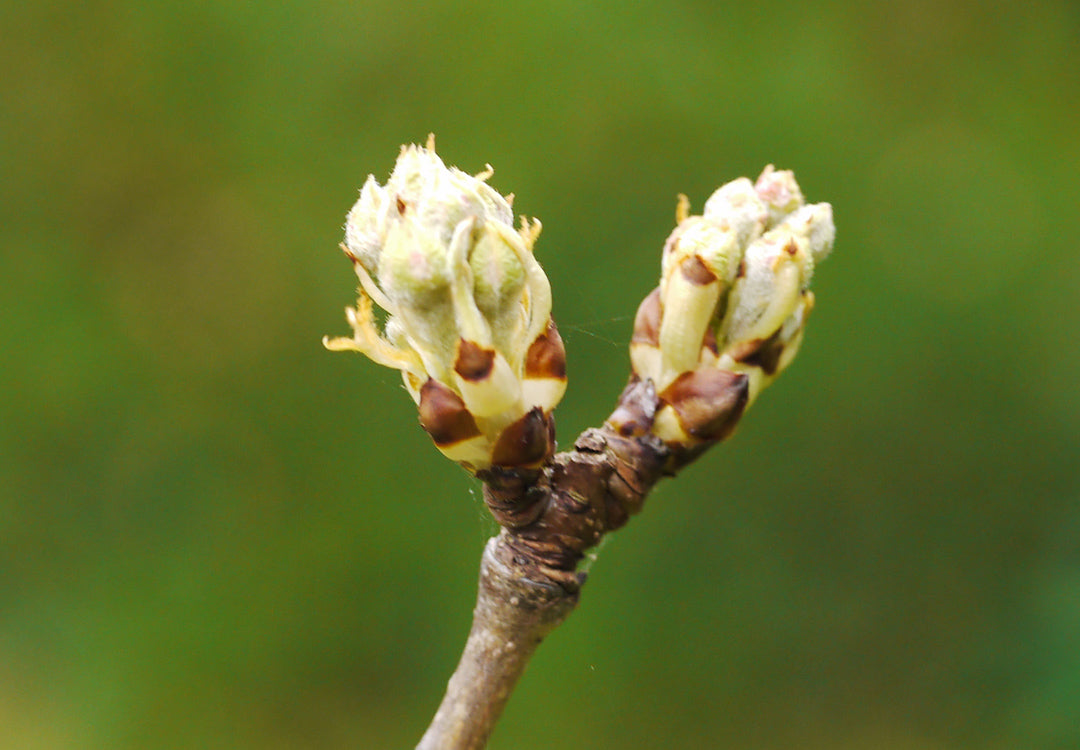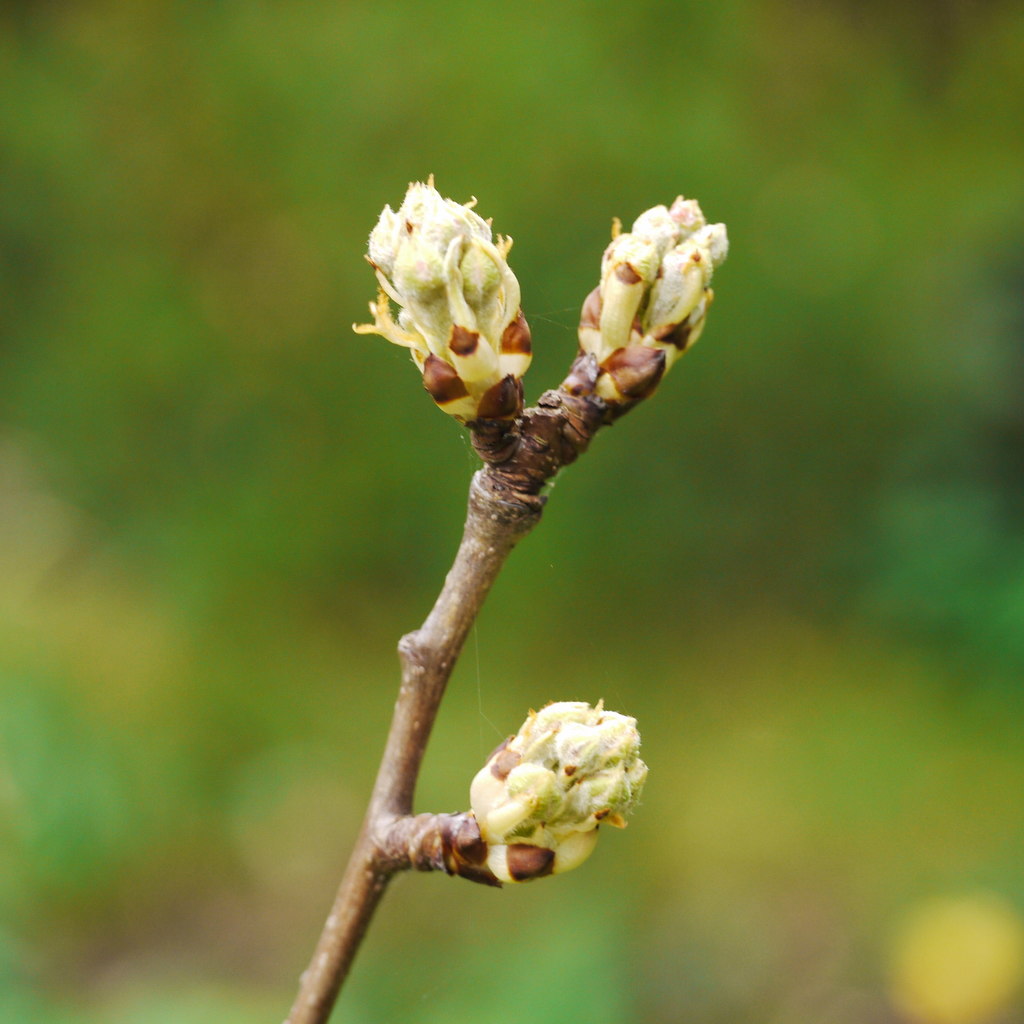
Plants aren’t always able to grow new shoots wherever they please. There usually needs to be an existing shoot, whether exposed in the axil of a leaf or hidden beneath their bark. Buds contain meristematic tissue that is necessary to grow new plant cells.
A bud is a condensed shoot with tiny leaves and branch material including nodes and internodes that are much closer together than in mature plant tissue. It contains meristematic tissue (stem cells) that may develop into branches, leaves or flowers.
During the growing season, usually in spring, these nodes and internodes stretch out and mature into proper leaves, stems and flowers. Inside the leaf axil of each leaf lies a tiny lateral bud, ready to grow if it’s ever needed.
Sometimes bark grows over the buds if they aren’t used for a long time and they become “epicormic” buds which are hidden but can burst through the bark at any time of stress.

Apical bud on the very tip of an ornamental pear in summer. See also the axillary bud nestled into the leaf below. Photo via Plants Grow Here.

These are pear buds waking up for spring after a cold, sleepy winter. Image source

Oak tree with water sprouts emerging from under the bark, possibly due to stress. Looks like it has powdery mildew on the leaves too (but the yellow lichen on the bark is nothing to worry about). Image source
In woody plants, buds are usually protected by scales which can vary in texture and toughness based on the plant, and these fall off as the leaves open up and mature. If no scales are present, the bud is termed “naked”.
As well as existing terminally on the very tip of a stem, they are also formed in the axil where the top of a petiole meets the branch, but “adventitious” buds are those that seem to pop up randomly, perhaps from the vascular cambium between the xylem and phloem.
Buds may be given the green light from a plant to grow in a normal fashion, or a stressed plant may throw out “water sprouts” from all around in order to gain back leaves it may have lost through heat stress, disease or human mal-pruning.
Bud types are easily differentiated in four different groups:
1. Location
Terminal: tip of the stem
Axillary: axil of a leaf
Adventitious: seemingly random from the roots or stem
2. Status
Accessory: secondary buds right next to a “principal” bud
Pseudoterminal: an axillary bud that steps up and takes on the role of the original terminal bud when it dies or is cut off
Resting: formed at the end of the growing season and lie dormant until the next growing season
Dormant or Latent: like resting but can be dormant for several growing seasons or indefinitely. Epicormic buds, which lie dormant under the bark are an example
3. Morphology
Scaly: bud is covered by scales
Hairy: hair may cover the bud whether scaly or naked
Naked: no scales on the bud
4. Function:
Vegetative: also called a leaf bud, this is an embryonic shoot
Reproductive: also called a flower bud, this is an embryonic flower
Mixed Bud: containing both embryonic shoots and flowers
Conclusion
Knowing how buds function is important if you want to understand plants and how they operate.
As you observe the plants around you, notice how each leaf has a potential branch in its axil in the form of a bud, and imagine how it has grown over time from the tiny embryo that initially emerged from a seed.
